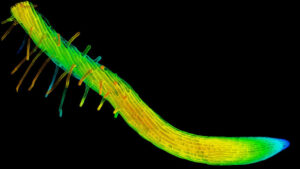
Ever experience a moment when your brain simply declares, “I’m done”? This sensation, known as cognitive fatigue, may not be as enigmatic as once thought. A recent study sheds light on what transpires in our minds during such episodes and how we decide whether to persevere or surrender.
Researchers from Johns Hopkins University School of Medicine and the Kennedy Krieger Institute utilized brain scans to explore the dynamics of mental fatigue. By examining the brain activity of 28 healthy adults through functional MRI, the team aimed to understand what happens when cognitive fatigue sets in.
A Closer Look at Mental Fatigue
The study involved 18 women and 10 men, aged between 21 and 29, who were compensated $50 for their participation, with the potential to earn additional rewards based on their performance. Each participant underwent a baseline MRI scan before embarking on a series of memory exercises inside the MRI machine.
During these exercises, participants were tasked with remembering sequences of letters, with the difficulty increasing as the sequence lengthened. After each task, they rated their mental fatigue and received feedback on their performance, with bonuses ranging from $1 to $8 depending on task difficulty.
Two Key Brain Areas Light Up
The brain scans revealed notable findings. When participants reported feeling mentally fatigued, two specific brain regions exhibited increased activity. The right insula, associated with fatigue, and the dorsolateral prefrontal cortex, which manages working memory, both showed more than double the activity compared to baseline levels.
“Our lab focuses on how [our minds] generate value for effort,” explained Dr. Vikram Chib, an associate professor of biomedical engineering at Johns Hopkins University School of Medicine and a research scientist at Kennedy Krieger Institute.
Dr. Chib highlighted that while cognitive tasks are taxing, there remains much to learn about the mechanisms of fatigue accumulation in the brain.
Motivation Matters – A Lot
The study found that participants were more inclined to tackle challenging tasks when the rewards were substantial. This observation aligns with previous research indicating the necessity of incentives to motivate physical effort.
“That outcome wasn’t entirely surprising, given our previous work finding the same need for incentives in spurring physical effort,” said Dr. Chib.
It appears that the brain evaluates whether mental effort is “worth it,” opting to exert itself only when a clear benefit is perceived.
Rethinking Fatigue in Mental Health
Fatigue poses a significant challenge in conditions such as PTSD and depression. Understanding its workings in healthy brains is a crucial step toward improved treatment strategies.
“Now that we’ve likely identified some of the neural circuits for cognitive effort in healthy people, we need to look at how fatigue manifests in the brains of people with these conditions,” noted Dr. Chib.
Dr. Chib suggests that the same scanning techniques could eventually assist doctors in objectively classifying cognitive fatigue, potentially leading to new therapies, including medication and cognitive behavioral therapy.
What the Brain Scans Don’t Show
Despite the promising findings, the research team acknowledges the study’s limitations. Functional MRI tracks blood flow in the brain, indicating general activity, but it doesn’t capture the finer details of neuron-level behavior.
“This study was performed in an MRI scanner and with very specific cognitive tasks. It will be important to see how these results generalize to other cognitive effort and real-world tasks,” Dr. Chib remarked.
Nonetheless, the study provides valuable insights into how we respond to mental exhaustion and what it takes for the brain to continue functioning. The full study is available in the journal JNeurosci.
For more engaging articles, exclusive content, and the latest updates, subscribe to our newsletter. Explore EarthSnap, a free app brought to you by Eric Ralls and Earth.com.







